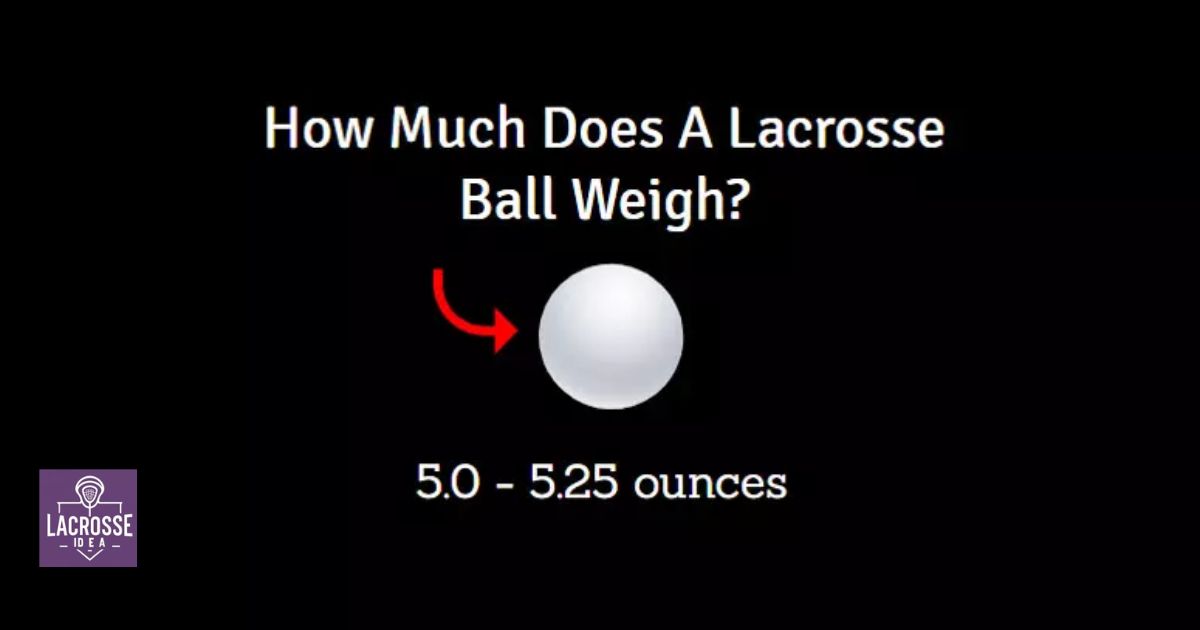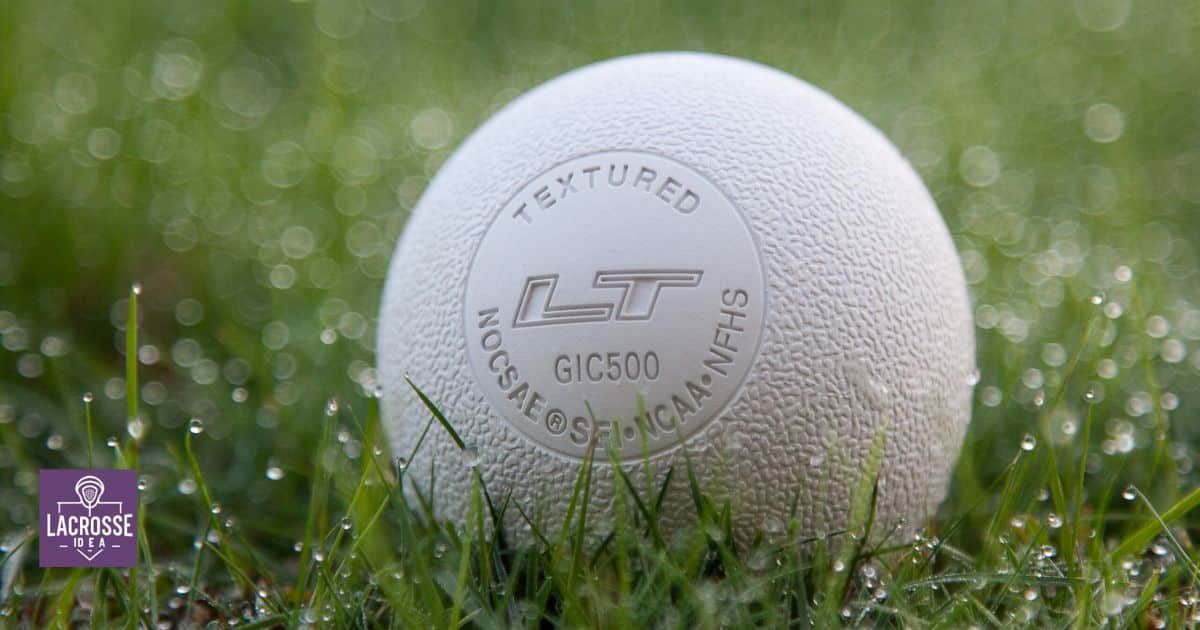Lacrosse, a sport known for its fast-paced action and intense physicality, requires precise equipment to achieve optimal performance. One crucial element that often goes unnoticed is the weight of a lacrosse ball. Understanding the significance of its weight can greatly impact a player’s game. In this article, we will explore the standard weight range of lacrosse balls and the factors that can influence their weight.
We will also discuss how weight affects ball control and shooting accuracy, as well as the regulations and standards set in place. Additionally, we will provide guidance on selecting the right weight lacrosse ball for individual needs and offer tips on maintaining their weight. Whether you are a seasoned player or a newcomer to the sport, this guide aims to help you navigate the realm of lacrosse ball weight with confidence.
Key Takeaways
- The standard weight range for a lacrosse ball is between 5.0 and 5.25 ounces (140 to 149 grams).
- Factors such as material composition, manufacturing process, age, and wear can affect the weight of lacrosse balls.
- Finding the right weight of a lacrosse ball is important for optimizing performance, throwing accuracy, ball control, and player comfort.
- Different types of lacrosse balls are available based on weight, including regulation weight, lightweight balls for training, and heavyweight balls for strength and accuracy improvement.
Standard Weight Range Of Lacrosse Balls
The standard weight range of lacrosse balls falls within a specific range. According to the official regulations set by the International Lacrosse Federation, a lacrosse ball must weigh between 5.0 and 5.25 ounces, which is approximately 140 to 149 grams. This weight range ensures consistency and fairness in the game, allowing players to have a consistent feel and control over the ball.
It also ensures that the ball can be thrown accurately and with the right amount of force. The standard weight range of lacrosse balls is crucial for maintaining the integrity of the game and providing a level playing field for all players. It is important for players to adhere to these weight standards to ensure fair competition and a sense of belonging within the lacrosse community.
Factors Affecting The Weight Of Lacrosse Balls
When considering the weight of lacrosse balls, several factors come into play that can affect their overall weight. These factors include:
- Material: Lacrosse balls are typically made of rubber, but the specific composition and quality of the rubber can vary. Different materials can have different densities, which in turn affects the weight of the ball.
- Manufacturing process: The way lacrosse balls are manufactured can also impact their weight. Small variations in the molding or curing process can result in slight weight differences between balls.
- Age and wear: Over time, lacrosse balls can become worn down and lose some of their weight. This can happen through repeated use and exposure to the elements, such as sunlight and moisture.
Understanding these factors is crucial in determining the weight of lacrosse balls and how they perform during gameplay. Transitioning to the next section, it is important to explore the importance of finding the right weight for gameplay.
Importance Of Finding The Right Weight For Gameplay
Finding the right weight for gameplay is crucial in order to optimize performance and ensure a fair and balanced playing experience. The weight of a lacrosse ball affects various aspects of the game, including throwing accuracy, ball control, and overall player comfort. A ball that is too heavy may hinder agility and speed, while a ball that is too light may not provide enough resistance for accurate passing and shooting.
By finding the ideal weight, players can maximize their skills and abilities on the field, leading to improved gameplay and increased enjoyment. In the next section, we will explore the different types of lacrosse balls based on weight, providing players with a comprehensive understanding of the options available to them.
Different Types Of Lacrosse Balls Based On Weight
Exploring the categorization of lacrosse balls based on weight reveals distinct variations in gameplay experience. Different types of lacrosse balls are available to suit the preferences and playing styles of individuals. Here are three categories of lacrosse balls based on weight:
- Regulation weight (5 ounces): These are the standard lacrosse balls used in official games and practices. They provide a balanced experience and are suitable for players of all levels.
- Lightweight balls (4 ounces): These balls are commonly used for training purposes. They allow players to develop their skills, such as passing and shooting, with greater control and precision.
- Heavyweight balls (6 ounces): These balls are designed to challenge players’ strength and improve their power and accuracy. They are often used by more experienced players to enhance their skills and performance on the field.
How Weight Affects Ball Control And Shooting Accuracy?
The weight of a lacrosse ball significantly influences ball control and shooting accuracy. When a lacrosse ball is too heavy, it can be challenging for players to maintain proper control and accuracy during passes, catches, and shots. The added weight can make it difficult to generate enough power and speed, resulting in weaker throws and shots.
On the other hand, a ball that is too light may be difficult to control, leading to inaccurate passes and shots. Finding the right balance in weight is crucial for players to have optimal control and accuracy on the field. Understanding how weight impacts player performance and injury prevention is essential in ensuring that players can perform at their best while minimizing the risk of injuries.
How Weight Impacts Player Performance And Injury Prevention?
Weight plays a crucial role in determining player performance and injury prevention in lacrosse. The weight of a lacrosse ball, as discussed in the previous subtopic, affects ball control and shooting accuracy. However, weight also has a direct impact on how players perform on the field and their susceptibility to injuries. Here are three key ways in which weight impacts player performance and injury prevention:
- Speed and Agility: Heavier players may have difficulty moving quickly and changing direction on the field, affecting their ability to keep up with the pace of the game and make quick plays.
- Endurance: Carrying excess weight can lead to fatigue more quickly, reducing a player’s ability to sustain their performance throughout the game and increasing the risk of injuries due to decreased focus and coordination.
- Joint Stress: Excessive weight puts increased stress on joints, such as the knees and ankles, making players more prone to injuries like sprains or ligament tears.
Understanding the impact of weight on player performance and injury prevention is crucial for coaches, trainers, and players themselves to optimize training and avoid unnecessary risks on the field.
Recommended Weight For Beginners Vs. Advanced Players
When considering the recommended weight for beginners versus advanced players in lacrosse, it is important to take into account their respective skill levels and physical capabilities. Beginners generally benefit from using a slightly lighter lacrosse ball, as it allows them to develop proper throwing and catching techniques without straining their muscles. A lighter ball also reduces the risk of injury for players who are still learning the fundamentals of the game.
On the other hand, advanced players who have mastered the basic skills may prefer using a heavier ball to challenge their strength and improve their shot power. Additionally, advanced players are typically more physically developed and can handle the increased weight without compromising their performance. Transitioning into the next section, let’s explore the role of weight in different lacrosse positions.
The Role Of Weight In Different Lacrosse Positions
Different lacrosse positions require specific ball weights to optimize player performance and skill execution. The weight of the lacrosse ball plays a crucial role in various positions, as it affects the player’s ability to throw, catch, and control the ball. Here are three key considerations regarding the role of weight in different lacrosse positions:
- Attackers: Attackers typically prefer lighter lacrosse balls, as it allows for quicker, more accurate passes and shots. The lighter weight enables them to maneuver the ball swiftly, increasing their chances of scoring goals.
- Midfielders: Midfielders require a balance between speed and control. Therefore, they often opt for medium-weight lacrosse balls. This weight allows them to throw accurate passes over long distances while maintaining good ball control.
- Defensemen: Defensemen prioritize ball control and accuracy over speed. Therefore, they tend to choose heavier lacrosse balls. The added weight provides stability and control when making aggressive checks and long passes.
Understanding the role of weight in different positions allows lacrosse players to optimize their performance and excel in their respective roles on the field.
Weight Regulations And Standards In Lacrosse
To ensure consistency and fairness in the game of lacrosse, regulations and standards are in place to govern the weight of lacrosse balls. These regulations aim to maintain a level playing field and ensure that all players have the same experience when playing the game. The weight of a lacrosse ball is standardized across different levels of play, from youth to professional leagues.
According to the regulations set by the National Collegiate Athletic Association (NCAA) and the Federation of International Lacrosse (FIL), a lacrosse ball must weigh between 5 and 5.25 ounces (142-149 grams). This standard weight ensures that all players, regardless of their position or skill level, are using the same weight of balls during gameplay.
| Weight Range (ounces) | Weight Range (grams) |
|---|---|
| 5 – 5.25 | 142 – 149 |
How To Choose The Right Weight Lacrosse Ball For Your Needs?
After considering the weight regulations and standards set forth by lacrosse governing bodies, it is crucial to carefully select the appropriate weight lacrosse ball that suits your specific needs. Here are three key factors to consider when choosing the right weight lacrosse ball:
- Level of play: Different levels of play require different ball weights. For example, youth players typically use lighter balls, while college and professional players use heavier balls.
- Position: The position you play can also influence the weight of the lacrosse ball you choose. Attackers and midfielders may prefer lighter balls for increased speed and accuracy, while defenders may prefer heavier balls for increased power and control.
- Personal preference: Ultimately, your personal preference should guide your decision. Some players may feel more comfortable and perform better with a specific weight lacrosse ball.
Tips For Maintaining The Weight Of Lacrosse Balls
When it comes to ensuring the optimal performance and longevity of your lacrosse balls, proper maintenance is key. By following a few simple tips, you can maintain the weight of your lacrosse balls and prolong their lifespan.
Firstly, it is important to store your lacrosse balls in a cool and dry place. This will prevent them from absorbing moisture, which can lead to weight gain. Secondly, avoid exposing your lacrosse balls to extreme temperatures, as this can cause them to expand or contract, affecting their weight. Finally, regularly inspect your lacrosse balls for any signs of wear and tear, such as cracks or dents, and replace them if necessary.
| Tips for Maintaining the Weight of Lacrosse Balls | ||
|---|---|---|
| Store in a cool and dry place | Avoid extreme temperatures | Regularly inspect for wear and tear |
Where To Purchase Lacrosse Balls Of Different Weights?
You can find lacrosse balls of different weights for purchase at various sporting goods stores and online retailers. Whether you’re a beginner looking for a lighter ball or a more experienced player wanting to challenge yourself with a heavier one, there are plenty of options available to suit your needs. Here are three places where you can purchase lacrosse balls of different weights:
- Sporting Goods Stores: Visit your local sporting goods store, where you’ll likely find a range of lacrosse balls in different weights. The advantage of shopping in-store is that you can physically examine the balls before making a purchase.
- Online Retailers: Many online retailers specialize in lacrosse equipment and offer a wide selection of lacrosse balls in various weights. Shopping online allows you to compare prices and read customer reviews to make an informed decision.
- Lacrosse Specialty Stores: Look for specialty stores that focus specifically on lacrosse equipment. These stores often have a wider range of options and knowledgeable staff who can help you choose the right weight for your skill level and playing style.
Whether you prefer the convenience of online shopping or the personalized assistance of a specialty store, there are plenty of options available for purchasing lacrosse balls of different weights.
FAQ’s
Is lacrosse ball soft or hard?
Lacrosse balls are dense and hard, unlike tennis balls. Under stress, they don’t become softer. Lacrosse balls are an effective massage tool that can help sore muscles feel better. Self-myofascial release is a technique used in lacrosse ball massage.
Can a lacrosse ball break a bone?
Relevance Men’s lacrosse is a high-scenario, fast-moving sport in which the ball can travel up to 90 mph. In lacrosse, laryngeal fractures are an uncommon injury.
Can a human kick break a bone?
The most common cause of fractures is applying more force to a bone than it can survive. Twisted bones are the weakest type of bone. Falls, injuries, or direct strikes to the body can all result in bone fractures.
Can you freeze a lacrosse ball?
The solid rubber lacrosse balls can be a little challenging to drill through. After putting them in the freezer for a while, we discovered that drilling them was a little bit easier. Therefore, before drilling them, you may want to freeze them for a few hours.
Conclusion
In conclusion, the weight of a lacrosse ball plays a crucial role in gameplay, affecting ball control and shooting accuracy. Understanding the different types of lacrosse balls based on weight, as well as weight regulations and standards in the sport, is essential for players and enthusiasts. By choosing the right weight lacrosse ball and maintaining its weight, players can optimize their performance on the field. So, whether you’re a beginner or a seasoned player, finding the perfect weight lacrosse ball is key to success.








